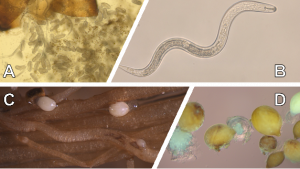Ohio Growers, We Invite You to Get Involved in Research
By Dr. Horacio Lopez-Nicora, Assistant Professor in Plant Pathology at The Ohio State University, Adapted from C.O.R.N. 2022-16
Soybean cyst nematode (SCN) is silently gaining territory in Ohio as SCN numbers are rising.

One of the main reasons this nematode remains the most economically important pathogen of soybean is that it can cause yield reduction between 15 to 30% with absolutely no visible symptoms! Resistance to SCN remains the most effective management strategy when rotating to a non-host crop is not an option. Unfortunately, the use of the same source of resistance exerted selection pressure on SCN populations resulting in a shift in virulence to adapt and parasitize soybean cultivars with SCN-resistance. In other words, nematodes are becoming resistant to the resistance.

With funding from the Ohio Soybean Council and United Soybean Board through The SCN Coalition, we invite growers, researchers, and extension educators to help us better understand the relationship between SCN reproduction, soil texture, and soil health measurements. It does not matter if you are growing soybean or corn, if you are a grower in Ohio, you can still participate in this research. A soil sample in spring and another one in fall is all we need. We invite you to get involved!
LEARN MORE ABOUT THIS RESEARCH OPPORTUNITY HERE AND HERE.
Contact your Extension educator or email lopez-nicora.1@osu.edu to sign up.